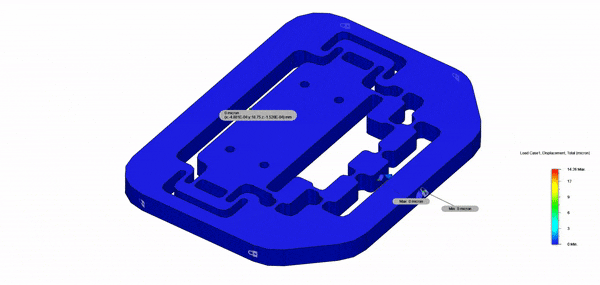Flexible Machinery
I’ve been interested in compliant mechanisms (or Flexures) since seeing Dan Gelbart’s excellent video some years ago which outlines their precision, ease of construction, and incredible durability. This has become a years-long rabbit hole which now influences my technical R&D everywhere - they are super useful, we are surrounded by compliant mechanisms (from the flip-cap of a water bottle to the mems accelerometers in cellphones) to increase accuracy, lifespan, and reduce maintenance and up-front costs in design.
Compliant mechanisms are mechanical devices made using the flexibility of materials rather than additional mechanical components. Traditional engineering methods integrate a number of single-purpose components (a bearing for rotary motion, a connecting rod for power transmission, gears for mechanical reduction, housings, springs, etc) with large part counts, high tolerance interfaces, and tons of assembly and integration. This means assembly costs, supply chain costs, warehousing costs, quality control costs, and tons and tons of integration work and part tolerances to manage.
On the other hand, it’s possible for compliant mechanisms to combine complex mechanical assemblies into single parts which are all created at once with modern fabrication strategies like 3D printing. A good example of the power of this is openflexure, an open-source 3 axis linear motion system for things like microscope positioning. The microscope assembly is printed as a single part on consumer-grade FDM 3D printers. By using compliant mechanisms, a high-precision mechanical assembly can be created using low-precision fabrication techniques. Amazing!
In this design, there is a ~46x reduction in motion using two stages of levers to reduce the motion, turning 14 microns of travel into .3 microns of travel. This means 1mm of actuation turned into 20 microns of motion on the linear stage. For things like the alignment of optical components this level of precision can be critical.
It’s very likely that we’ll see more of these flexural designs to integrate complex mechanical assemblies to take advantage of the low cost-for-complexity of 3D printing. Particularly if we see 3D printing develop further into multi-material systems where material properties are more programmable. If for instance you could mix urethane or resin compositions to have a spectrum of high rigidity in some locations and high flexibility in others you could build complex mechanical assemblies in smaller footprints with higher ranges of travel and more reliability.
When I sit down to solve a problem now, one of the first questions I ask myself is “can this be a compliant mechanism?” because often, if it can, it is the best and simplest solution.
I did some exploration in this space to see if I could design a 2-axis flexure for the projection microscope project, and a ~micron-precision linear motion stage with mechanical reduction - If there’s sufficient interest I can go into more detail, but for now will just share some photos and files below.
X axis motion of the large-travel flexure
y-axis motion of the large-travel flexure
Video of precision mechanism in motion:
Further Exploration:
Download Link for precision flexure:
https://pinshape.com/items/44766-3d-printed-precision-linear-motion-flexure
Veritasium Video on Flexures:
https://youtu.be/97t7Xj_iBv0
Flexure Demo Board showing a range of possible configurations by Amy Makes Stuff:
https://youtu.be/YEz-r8KDY-0
Whitepaper on freedom and constraint topology for compliant mechanism design:
https://web.mit.edu/mact/www/Blog/Flexures/Parallel1.pdf




